"I reckon you’re going to get lucky today. It’s been raining here for the last month, but today’s looking good.”
Frankly, I’m not sure I was looking at the same sky as my host, Roger, at Ardwyn House B&B, as angry clouds bubbled away in the cauldron up above. Perhaps this is what passes for good weather in Llanwrtyd Wells, or maybe his expectations have shifted after what was a truly rotten early 2019 summer.
Maybe we’d get lucky. He says the weather here, in the self-styled smallest town in Britain, on the southern tip of the Cambrian Mountains, is suitably localised; they could get snow in nearby Abergwesyn and not get a flake here.
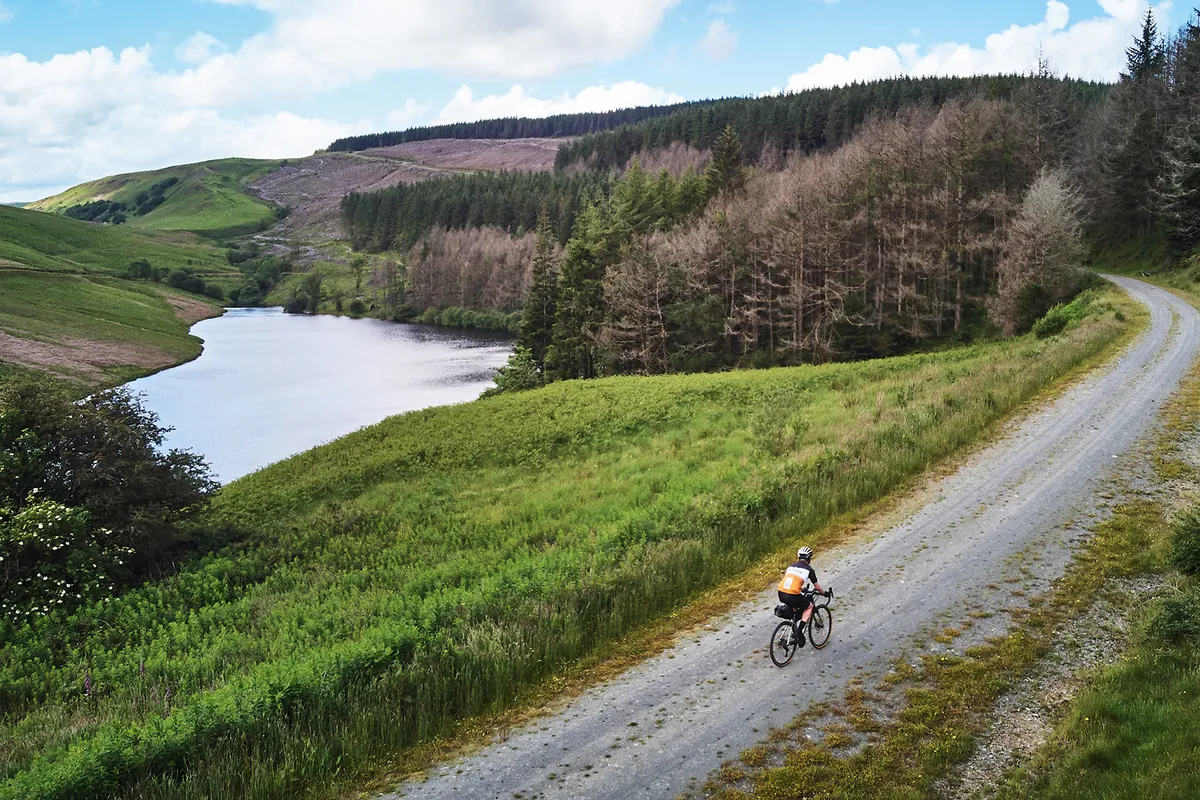
Roger’s words were still rattling around my brain when, with a turn of the pedals, drops of rain fell onto my sunglasses. As we turned onto a section of gravel before the first kilometre was out, the sky caved in and bitterly cold rain came tumbling out. Welcome to the summer solstice, mid-Wales style.
Set for adventure
There’s something less offensive about copping a soaking while bikepacking, as opposed to, say, the Sunday club run. The inevitability that it’s bound to happen? That this is an adventure and that getting wet can be filed in that draw?
Or perhaps the biggest saddle bag you’ve ever had makes the best ass saver, shielding you from the muck-spreading that is riding a gravel bike in the wet, or the spare dry clothes stuffed into said bag, should you need them? Whatever the reason, I wasn’t as downbeat as I usually am while riding in the rain.
The bones of today’s ride were devised by a local rider I got in touch with in 2016, when gravel riding was beginning to take hold in Britain.
The ride never happened for various fails on my part, but I always kept the route in mind and it made sense to do it today, as part of a bikepacking tour, in an altered form.
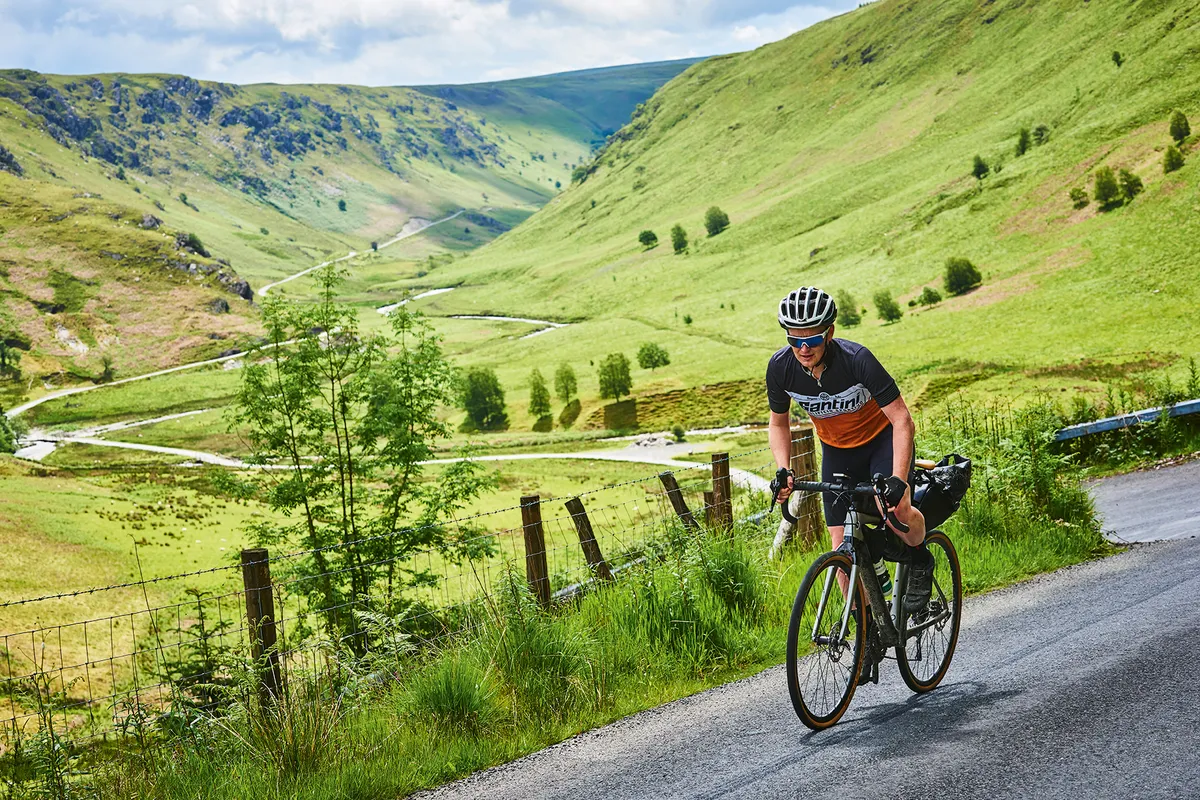
Back then I was still wet behind the ears when it came to the unique demands of gravel riding. The 100-mile route I’d requested – based on what I was used to on the road bike – was met with some words of warning.
The 80-mile route we settled on in 2016 was, I’d come to realise, still too demanding as a single day’s ride for me (and photographer Joe, who was hauling around an indecent weight of camera equipment in his rucksack), particularly with the kit we were carrying, so we shrunk it down further to a pint-sized 36 miles.
Still, in my growing experience of gravel riding, 36 miles with 1,200m elevation loaded with kit wasn’t insubstantial.
Dependent on terrain, gravel miles are double compared to road miles
A general rule of thumb – and this is very much dependent on terrain – is that gravel miles count double compared to the road.
This new route had a bit of everything: fantastic, extended sections of genuine gravel roads, connected by rural, quiet tarmac roads (including the supremely testing Devil’s Staircase climb, which we’d accidentally stumble upon) and some tougher, but short, sections of more mountain bike terrain.
Not a problem for the Scott Addict Gravel 20, which, in the six months I’ve been riding it, has shown itself to be a supremely versatile machine – I’ve ridden it, without modifications, in road gran fondos, gravel rides and now bikepacking trips and it really is a do-all bike.
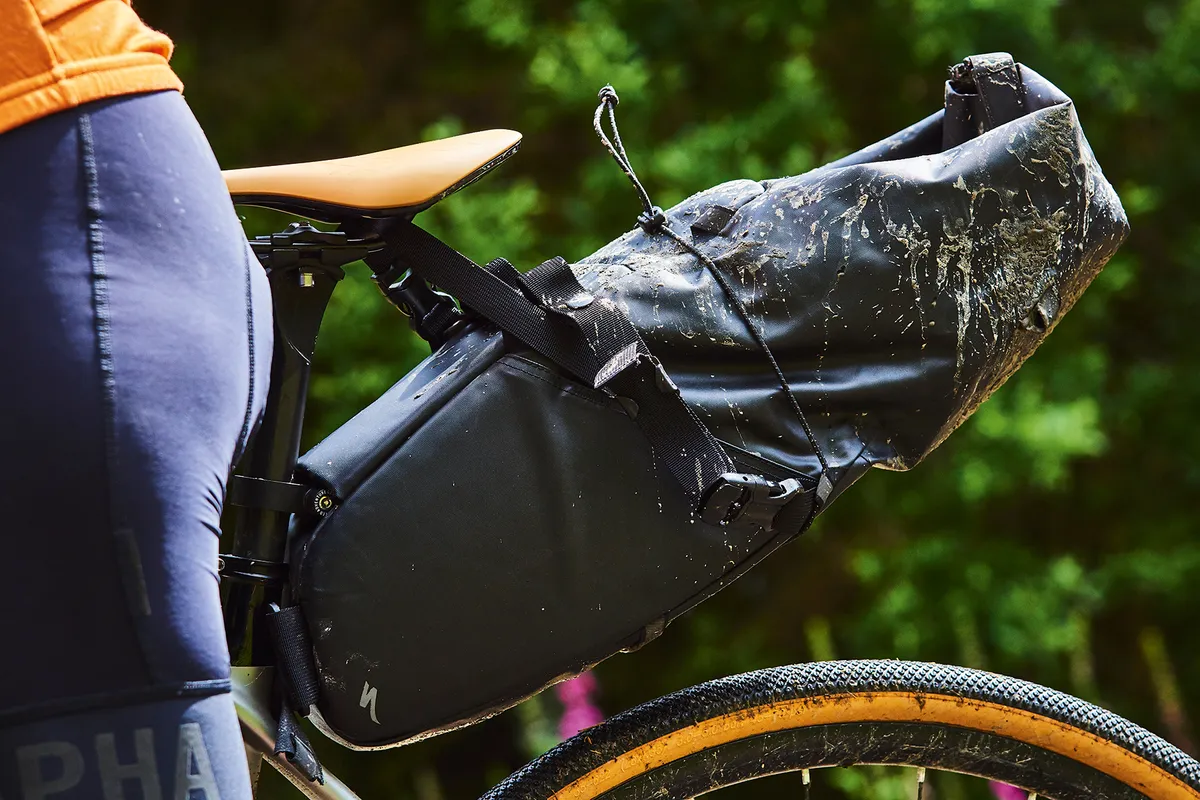
Hidden beauty
This part of Wales is one that might be easily overlooked, sandwiched as it is between the national parks of the Brecon Beacons and Snowdonia.
In 1965, attempts began to designate it as a national park, though these failed eight years later. Work is ongoing in securing it as an area of outstanding natural beauty.
“If you pick up a relief map showing the National Parks and AONBs of England and Wales, you will quickly notice one large upland area that has neither; that’s mid Wales,” says the Cambrian Mountains Society, an action group set up to further the region’s cause.
“If you’ve never been there, you might well conclude – and who could blame you? – that mid Wales is some kind of barren, dull wasteland that deserves no protection. But you’d be wrong.”
The Devil’s Staircase spits at you, gaining 151m in 1.3km... it’s formidable
They’re right, this is spellbinding terrain. Straight out of the gate of Llanwrtyd Wells, the route took us onto the rough stuff, and fast up to around 500m altitude. Not good news for photographer Joe, who, with his camera equipment in a rucksack, was hauling what felt like the equivalent of a small child on his back.
He wasn’t moving fast, though this could easily have been the result of the gastrointestinal effect of him eating kippers for breakfast, swiftly followed by a peanut butter nutrition bar, a queasy combination that I felt determined to stay upwind of.
This gravel track, and the hundreds of miles of similar tracks in this region, exists because of the huge industry of logging in the area. Not all of the roads are open to cyclists, or the general public. As a general rule, if there’s a sign that explicitly prohibits cyclists, we’d never recommend riding down it, though several locals we spoke to said they do and have never had any issues.
One sign we saw said ‘Strictly no mountain bikers, runners or horse riding’ – does that mean we’d get off on a technicality in this new age of gravel riding?
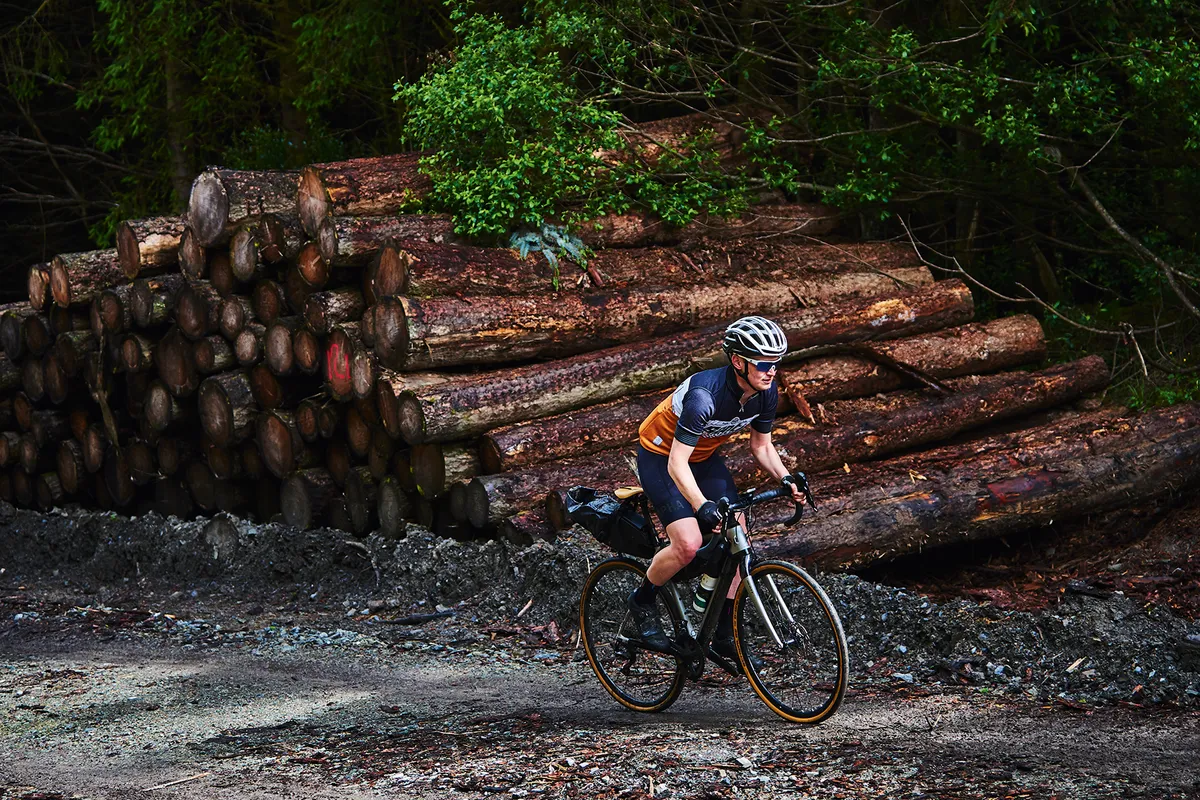
Abergwesyn brought down the curtain on the first section of gravel and onto the tarmac, though this section of road, which stretches 20 miles all the way to Tregaron is so narrow, remote and desolate that you won’t care one jot. Come the Devil’s Staircase, however, and you might: it spits at you, gaining 151m in 1.3km making it a formidable climb on a lithe road bike, let alone a loaded gravel machine – and even more so when your photographer requests repetitions on its steep switchbacks.
Just shy of the summit of the steep stuff, you swing a sharp left and get back onto the gravel. A relief for some, not for others, the gradient at least levels out, though you may have to mount a gate, which isn’t easy on the upper body after your wrestle with the Devil.
At this point the climbing began to take its toll. While never long, they come thick and fast and such is the concentration and lower speeds needed for gravel descents, you don’t take the momentum into the next climb like you would on a road ride.
Momentum was also cut by a never-ending series of cattle-gridded gates, which necessitated ungainly heaves of the Addict above my head and over the gate – all part of the bargain of gravel cycling.
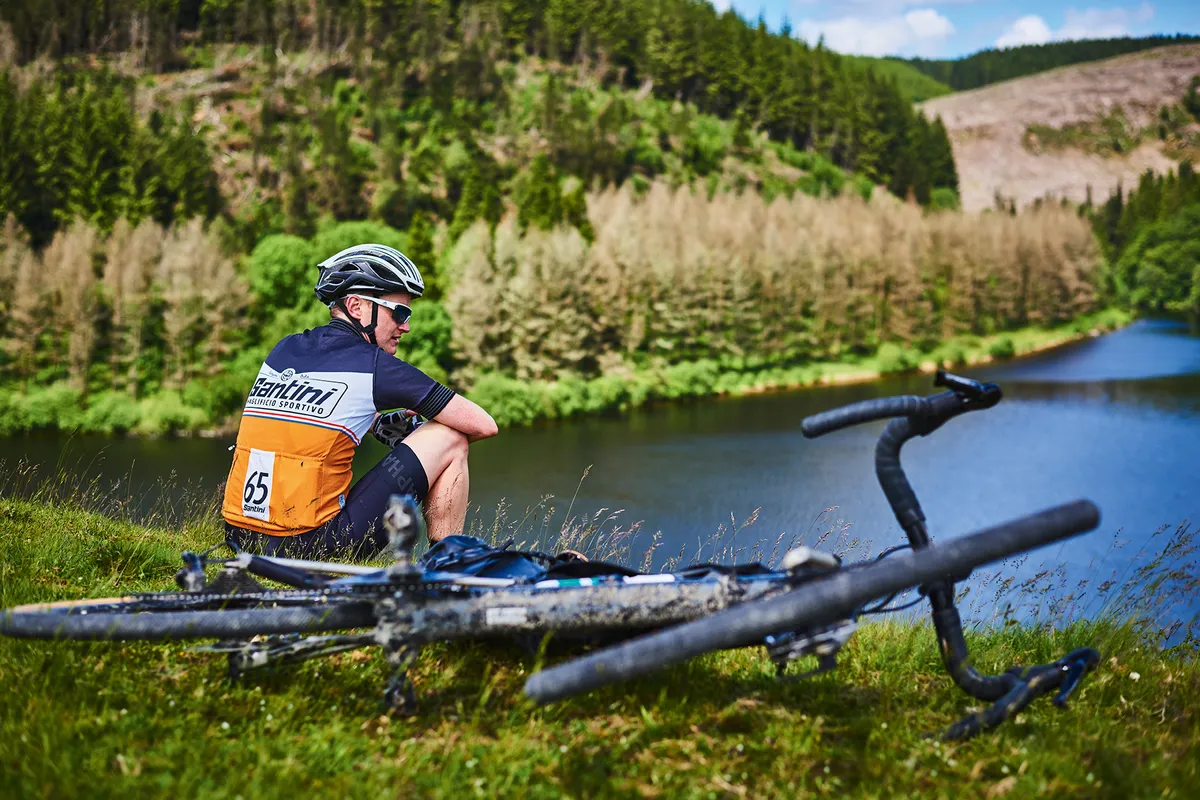
The sun – and a warm sun at that – was out by now and such was Joe’s thirst he was forced to refill his bottles in a stream. As expected there wasn’t a single cafe or shop to refuel and rehydrate on the whole route, so don’t travel light should you try this route out for yourself.
By now we’d arrived at the northern reaches of the Llyn Brianne dam, which regulates flow of water into the River Tywi. We’ve been here before down its eastern tarmac side but today would negotiate down its more circuitous – and gravelly – western side, which strays higher and further away from the water.
Construction on it finished in 1972, coming at a time of increasing water shortages in west Wales, and at 91m in height at 280.4m above sea level, it’s the highest dam in Britain. A hydro-electric station was added in 1997 – apparently, it’s a big tourist attraction and the modest sprinkling of cars was pretty much the sum of vehicles we saw during the entirety of our ride.
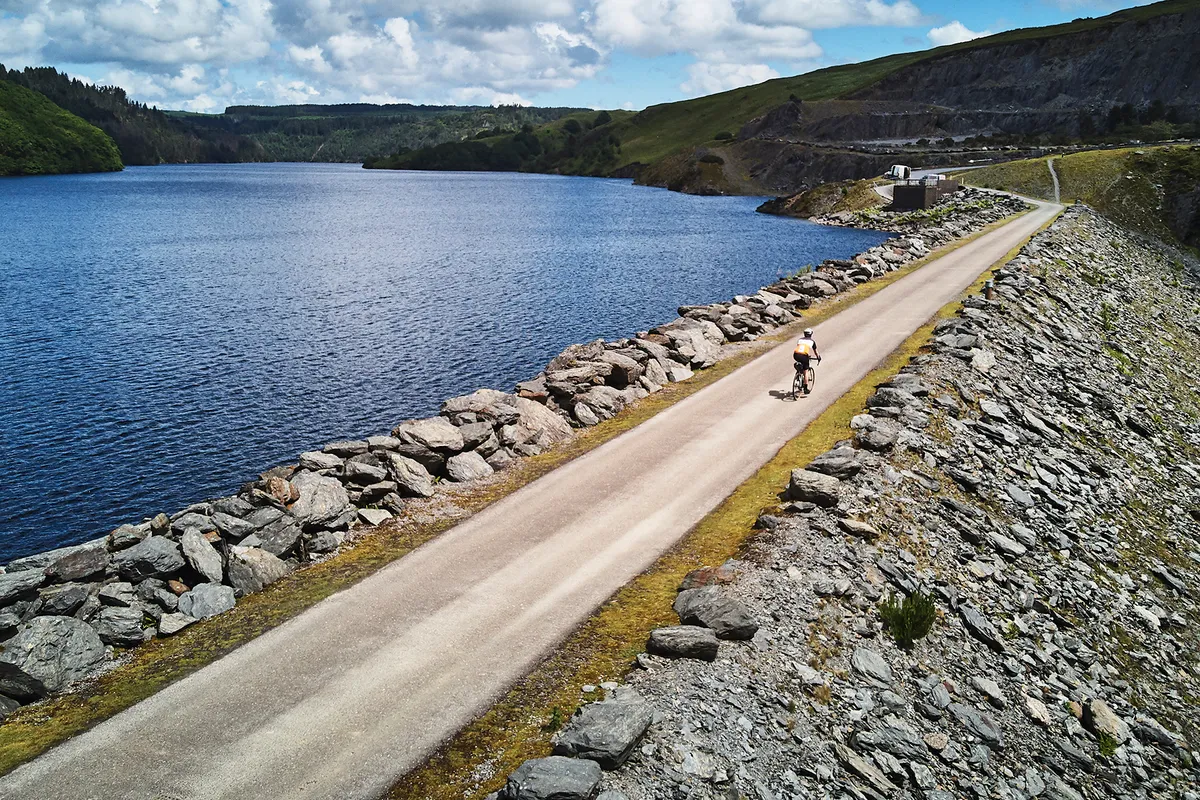
From here to the finish in Llanwrtyd it was more of what had come before – and we wouldn’t have wanted it any other way.
We’re lucky to ride our bikes in all of the best places, but some rides still stand out. This was close to impeccable (any ride without a coffee stop doesn’t get 10 out of 10) but that serves us right for not packing a flask, we had the space.
The Cambrian Mountains might not be a National Park, or an AONB, but it sure gets the seal of approval.
Get the route
Grand Tour: guide to smart bikepacking
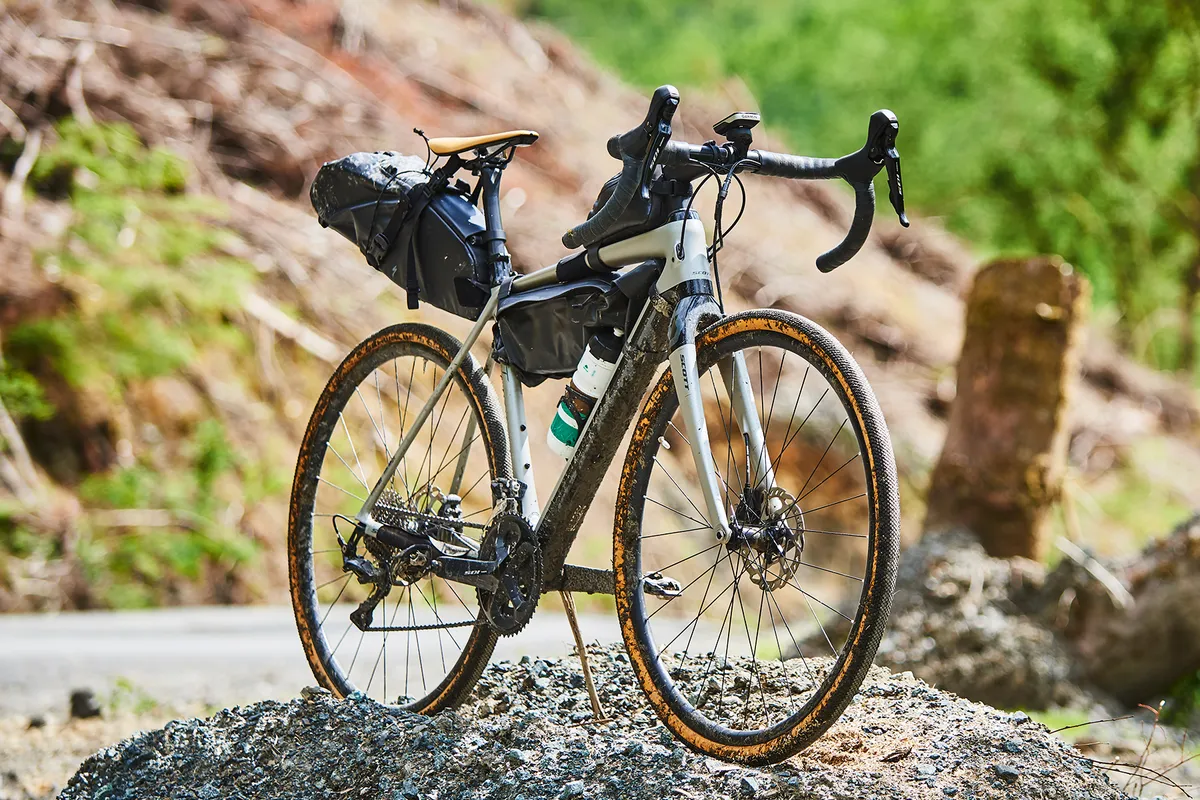
1. Lighten the load
While bikepacking isn’t about speed, travelling as light as possible always makes the ride more enjoyable, particularly on gravel roads.
There is now a huge range of bikepacking luggage available, from the likes of Alpkit, Altura and Apidura. I had Specialized’s Burra Burra across the bike, and the Stabiliser Seatpack 10 is a highlight because you barely realise it’s there.
Think about exactly what kit you need for your trip – over-packing evening clothing is a common mistake.
If you’re camping, this kit will take up the bulk of your space (ultralightoutdoorgear.co.uk is worth a look to keep your weight down. Be warned, low weight is generally proportional to high cost!) Staying in B&Bs is the ultimate way to travel light.
2. Plan your route, but stay flexible
Sketching your route on apps such as Komoot is a must, but be prepared for unforeseen events on the road that you might not spot on your computer.
Given the mixed terrain of bikepacking, your path may end up blocked – a river may be too high to cross, or a gravel road might be prohibited to cyclists.
3. Be prepared for bike emergencies
Given the remote terrain that you might encounter on a bikepacking trip, be prepared to be your own mechanic. On a road bike you might be used to getting away with just a mini pump and a spare tube, but out in the wilderness you need the skills and tools to perform your own repairs, to bike and body. Chain tools and first aid kits are essential items.
4. Load your kit correctly
Tents and clothing are best in the saddle bag, to give added weight to the rear.
A front handle-bar bag is best to keep light, so something that doesn’t weigh too much and isn’t going to rattle around.
The frame bag is best for items you need easy access to with water bottles in their usual place in a cage.
